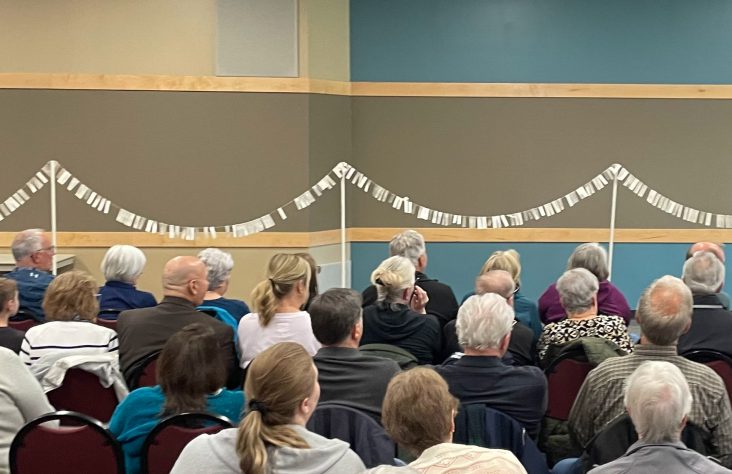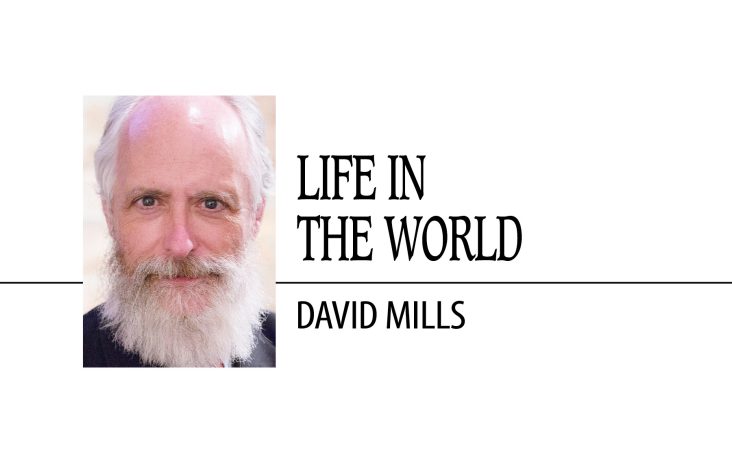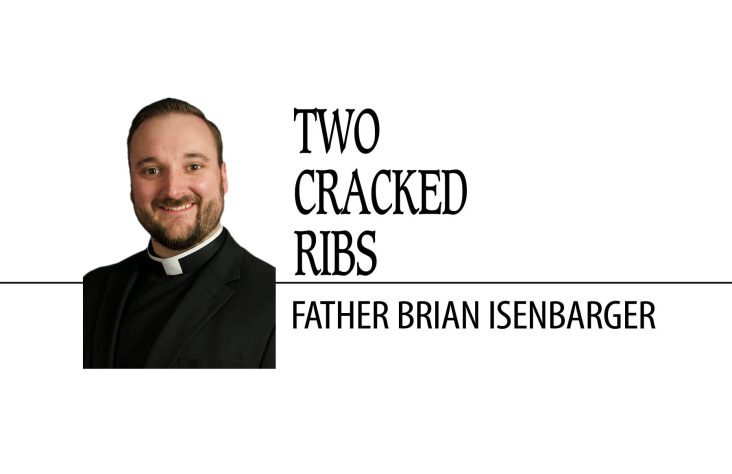July 5, 2023 // Bishop
Celebration of the Eucharist Brings Relic to Diocese
Abandonment. That is the word and vision St. Manuel González García felt and faced when he arrived on an early assignment — A vision of neglect and a feeling of sadness at the lack of praise and prayer for the Holy Father.
“He went to preach a mission to a village in Seville and found a tabernacle that he defined as an ‘abandoned tabernacle,’ dirty with cobwebs, and stained tablecloths,” shared Sister Mónica María Yuan of Las Misioneras Eucarísticas de Nazaret. “His first idea was to run away. However, he does not run away, and there he discovers the gaze of Jesus in that tabernacle, His voice telling him ‘Are you also going to run away and abandon me, like everyone else in this town?’ He stays there for a long time and finds that his life as a priest has to be oriented to this alone: that Jesus is not alone or abandoned in the Tabernacle and that men do not feel alone because God is always at their side, in the Eucharist, and in every Tabernacle.”

Joshua Schipper
This first-class relic of St. Manuel González García (a bone fragment) was given to the Diocese of Fort Wayne-South Bend by Mother Superior María Teresa Castelló Torres and Sister Mónica María Yuan of the religious order founded by San Manuel called Las Misioneras Eucarísticas de Nazaret (Eucharistic Missionaries of Nazareth) during a visit to the diocese for the Cross-Diocesan Eucharistic Pilgrimage in June.
The Diocese of Fort Wayne-South Bend will continue the duties of St. Manuel González García by sharing a recently donated first-class relic of the saint within the diocese. The relic is a fragment of the bone of St. Manuel González García. This special piece was donated by Mother Superior María Teresa Castelló Torres and Sister Mónica María Yuan of the religious order founded by St. Manuel González García called Las Misioneras Eucarísticas de Nazaret (Eucharistic Missionaries of Nazareth).
As the Eucharist called to St. Manuel González García, it also called to the Mother Superior María Teresa Castelló Torres and Sister Mónica María Yuan who journeyed to the United States to learn more about why they were receiving requests for relics from the U.S. that eventually led them to the Eucharistic Revival happening in the country.

Photo Provided by Esther Terry
Mother Superior María Teresa Castelló Torres (left) and Sister Mónica María Yuan are pictured with Bishop Rhoades and Esther Terry, Director of Hispanic Ministry. The Sisters are of the religious order founded by San Manuel called Las Misioneras Eucarísticas de Nazaret (Eucharistic Missionaries of Nazareth).
According to Esther Terry, M.T.S., Director for Hispanic Ministry in the Secretariat for Pastoral Ministries and Catechesis with the Diocese of Fort Wayne–South Bend, the duo traveled across the country meeting with bishops and visiting the United States Conference of Catholic Bishops (USCCB) during their exploration.
“Although more than a year ago we were aware of the Eucharistic Revival that the Catholic Church in the United States is experiencing, a few months ago we learned that a ‘relics tour’ was taking place. It was a great joy to learn that many people were getting to know St. Manuel and, therefore, getting closer to Jesus in the Eucharist. His great desire was that everyone should know Jesus in the Eucharist because in Him is true life, happiness, consolation, and peace,” said Yuan. We participated in some activities of the Eucharistic Revival. In the diocese of Manchester, for example, we were in the Catholic Expo that they organized together with the arrival of the relics of Blessed Carlo and St. Manuel. One of the activities we were most interested in participating in was the Eucharistic pilgrimage of your diocese, which would take place June 4-11, from the Fort Wayne Co-Cathedral to the South Bend Co-Cathedral.”
“They came here for the start of the cross-diocesan pilgrimage and participated in the first day,” said Terry. The team met with Bishop Rhoades and Esther Terry and during the conversation, the topic of getting a first-class relic of St. Manuel González García for public veneration in our diocese came up. The Sisters were delighted by the request, asked for a formal letter for their records, and presented Bishop Rhoades and Terry with a relic they brought with them on their trip.
“In the Diocese of Fort Wayne-South Bend, it was very moving to see that St. Manuel is becoming better known and seen as a companion on the faith journey of many people. We experienced some truly moving moments,” recalled Yuan. “In the meeting with the bishop and Esther Terry, Director of the Hispanic Ministry, we could see that they considered that the relic of St. Manuel would bring many spiritual goods to the Catholics of the diocese, and this made us decide to give them the relic of St. Manuel as soon as possible.”
Currently, the relic is housed at the Archbishop Noll Center with Bishop Rhoades for safekeeping. The relic will be displayed for public veneration in a prominent location in one of our diocesan parishes in the future.
“Bishop Rhoades wants the relic to be kept in one of our parishes with a large Hispanic community since St. Manuel was himself Hispanic from Spain, and all of his writings about the Eucharist were originally in Spanish. Our Hispanic communities have a deep devotion to the Eucharist,” said Terry.
The Las Misioneras Eucarísticas de Nazaret congregation was founded in 1921 by St. Manuel González García when he was bishop of Malaga, Spain.
“Our mission, therefore, is the same as St. Manuel’s: to be with Jesus and, at the same time, to announce to everyone that God lives in the Eucharist and is eager to speak, to show his love, to give as many graces as we need in every tabernacle of the earth and in every Mass. There are so many people who do not know it, and not only non-Catholics. The May 2019 Pew Research Institute survey showed that there are many Catholics, 7 out of 10, who do not believe that God Himself remains in the bread and wine at every Mass and, therefore, in every Tabernacle on earth,” said Yuan.
According to Yuan, their objective can be summarized in a word that St. Manuel González García invented: eucharize, which means to live to announce with words and deeds that God lives in the Eucharist. He is a God who loves us madly and what a contradiction that He is often alone or abandoned because people, Catholics, do not know that God Himself has stayed to live among us.
“We live this mission through the Eucharistic apostolate, especially in parishes, with prayer schools, formation groups, Eucharistic weeks, times of adoration, and catechesis,” said Yuan.
On their trip to the United States, the Sisters witnessed several moments where St. Manuel González García wanted to accompany Catholics to grow in their Eucharistic faith.
“It is so exciting to enter a church and see his relics or a picture, as much as to see a whole family venerating his relic or adoring Jesus in the Eucharist because St. Manuel has invited them to do so,” noted Yuan. “There was not a day of our trip that we did not say to our founder: It is you who wanted to come to accompany the Catholics of this country, and we are living in a great moment of discernment because it is evident that St. Manuel wants to be in the United States and we want to be generous with our response to what he is asking of us as a congregation.”
Having the relics of St. Manuel González García is a blessing to the Diocese of Fort Wayne-South Bend.
“It’s a beautiful opportunity to deepen our love for Jesus in the Eucharist by learning from San Manuel, known as ‘Apostle of the Eucharist’ and ‘Bishop of the abandoned Tabernacle.’ How often do we find ourselves distracted and ignoring the presence of Christ in our midst? San Manuel’s life and witness is a reminder to always stay close to Jesus in the Eucharist, and never abandon Him because Jesus never abandons us,” said Terry.
“The congregation has an office dedicated exclusively to sending relics and informing about the life of St. Manuel. For more than 50 years it has been publishing, on a monthly basis, thousands of graces received through the intercession of St. Manuel. Two of these graces were approved by the Holy See and served as miracles for the beatification and canonization of St. Manuel.
We know from this experience, that knowing St. Manuel will make people live their Eucharistic faith more deeply. And this, I can guarantee you, changes a person’s life,” said Yuan. “It is not the same when you fear that at any moment a misfortune could happen in your life as when you know that whatever happens, God is at your side and takes care of you and will never leave you alone. If family and friends are so important to us in difficult times, imagine how much peace it brings to the heart to know that God is at our side, taking care of us. Knowing that God in the Eucharist loves us, speaks to us, and listens to us, brings much peace to the souls of the faithful.”
Yuan said that relics are the remains of a holy person and even more beautiful to understand, believe, and know with certainty, that the Eucharist is not a relic, but that it is Christ, God, alive among us.
“Thinking of St. Manuel, who dedicated his life to the Eucharist, his relics help us to know Jesus the Eucharist better and, therefore, to be Eucharistic people, happy, grateful to God for giving Himself entirely to us, for saving us, for making us happy,” said Yuan. “If I could only say one sentence, I would say that the presence of the relic of St. Manuel in the diocese will bring forth Eucharistic and Eucharized people, that is, people who live in deep communion with Jesus Christ and who announce, with their lives, that God loves us all without distinction and is ready to give His life for us, giving Himself as food in the Eucharist.”
The best news. Delivered to your inbox.
Subscribe to our mailing list today.






